Keynote Forum

Steven J Adelman
USATitle: Basis of Novel Therapeutic approaches for Cardiovascular Disease
Abstract:
Statement of the Problem: Cardiovascular Disease remains the major killer in the Western world despite the demonstrated benefits of lipid lowering therapies. Novel approaches are being investigated to address further therapeutic needs, currently with limited success. Processes leading to heart attacks include lipid deposition (i.e. cholesterol), lesion progression and recruitment of immune cells with their activation, subsequent plaque rupture and release of prothrombotic components. Ultimately, blockage of blood flow occurs. Of the pathways involved, two major mechanistic pathways have been under study: 1). elevation of HDL, by any means, to enhance cholesterol efflux and removal of cholesterol from the vascular wall to drive the process of reverse cholesterol transport (RCT). This is movement of cholesterol from cells of the atherosclerotic vasculature to HDL in the blood and subsequently to the liver for modification and excretion to the gut for elimination from the body, and 2). regulation of inflammatory pathways in attempts to inhibit vessel wall plaque degradation and rupture leading to heart attacks.
Epidemiologic studies have shown significant correlations of HDLc levels with reduced cardiovascular events. A number of methods for elevating HDL have been under study, among which a significant focus has been to inhibit the activity of cholesterol ester transfer protein (CETP). CETP is an enzyme that transfers cholesterol ester from HDL to LDL. Blocking this enzyme leads to elevations of HDL cholesterol and increases in HDL particle size. Though this approach has successfully enhanced cellular cholesterol efflux, the first step in RCT, numerous attempts in the clinic have failed to show benefit in reducing cardiovascular events. Recent findings have suggested that subsequent function of the HDL particles may be affected in a negative way, with activities of HDL modifying enzymes reduced as well as uptake by hepatic cells. Thus, although initially seemingly successful in enhancing efflux, cardiovascular events were not reduced. A number of additional / novel approaches to HDL modulation are now under study.
A second approach currently under investigation is regulation of clinical events through inhibition of inflammation in the vascular wall. With the initiation of atherosclerosis, lipid is deposited and immune cells including macrophages are recruited to the site. As lesions develop, cells become engorged with lipid, becoming foam cells, and through during these processes, become activated. Activation enhances cell recruitment and release of cytokines and expression of adhesion molecules. Proteolytic enzymes are also released, with breakdown of the intimal surface and of vulnerable regions of the lesion cap, resulting rupturing of the plaque. Pro-thrombotic contents of the vessel wall are then released, leading to blockage of the lumen of the vessel, and of blood flow. Inhibition of immune cell recruitment and activation are an important approach to therapeutic treatment of cardiovascular disease, with some success established, but significant improvements to the approaches needed. Innovative methods to effect this process will be discussed.
Conclusion. Several novel therapeutic approaches to treatment of cardiovascular disease are under study, but improvements to achieve therapeutic benefit will be required.
Biography:
Pharmaceutical research expert with more than 20 years experience in Drug Discovery and Development. Focused on Start-ups involved in the identification of targets and compounds, and their development in therapeutic areas of expertise and need, including Cardiovascular, Metabolics, Immunology and Women's Health.
Specialties: Therapeutic Expertise: Cardiovascular, Metabolic, Immune Response & Diseases, Women’s Health Disorders, Atherosclerosis, Diabetes, Transplant.
Mechanistic Expertise: Gene Expression Profiling, Nuclear Receptor Biology, Lipid and Lipoprotein Metabolism, Vascular Wall Biology, Animal Models of Human Disease, Biochemistry & Physiology, Cultured Cell Screening Assays
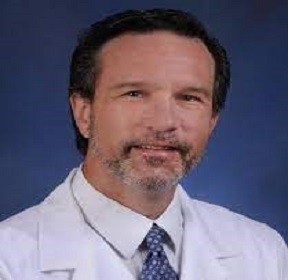
Title: A Proposed Approach for the Management of Diastolic Dysfunction: Optimization of the E and A Wave Measurement, Morphology and Timing
Abstract:
Much focus over the past few decades has been on the systolic phase of the cardiac cycle, yet it is becoming evident that more advanced therapies are warranted for the clinical management of heart failure, specifically diastolic dysfunction. A novel optimized approach in evaluating and managing diastolic dysfunction/ heart failure is required to evaluate and treat cardiac dysfunction. The proposed measures include the evaluation of the baseline functionality of the cardiac conduction system, Baseline E and A wave Measurement and Morphology (BEAMM) and STRess-induced E and A wave Measurement and Morphology (STREAMM) with timing and variability taking into consideration of both macro and micro diastolic myocardial processes. Implementation of a management plan that includes echocardiographic optimization (ECHO-Op) and pharmaceutical optimization (PharmOp) into the current guideline recommendations for the evaluation and management of diastolic dysfunction/ heart failure is an additional goal. Clinical adoption of the proposed approach may lead to earlier identification of patients at risk of diastolic dysfunction/ heart failure as well as other associated cardiac symptoms and downstream pathological processes.
Biography:
John R. Dylewski is a cardiac electro physiologist and professor of medicine in active clinical practice for the last 20+ years with an extensive and diversified background in materials engineering and medical applications of artificial intelligence to improve healthcare delivery. With the abundance of valuable data generated for patient care and the continuous production of scientific knowledge, Dylewski found it significantly challenging to deliver accurate, up-to-date and expeditious care to his tens of thousands of patients resulting in the development of the Complaint2Care model for a novel healthcare delivery platform, LifeSaver, powered by Apollo Artificial Intelligence.
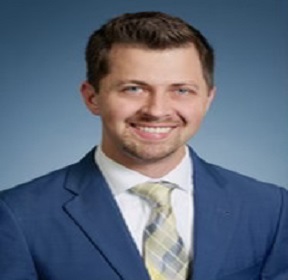
Title: Pharmaceutical Atrial-Ventricular Optimization in Diastolic Dysfunction: A Clinical Concept Application of Materials Engineering to Myocardial Pathophysiology
Biography:
Benjamin Cooper is currently a medical resident at Aventura Hospital and Medical Center in Aventura, FL. Prior to starting medical school, He was a full-time Firefighter/Paramedic in Des Moines, Iowa. In addition, he worked at Iowa Heart Center as a Testing Paramedic for CT, Nuclear, and Ultrasound departments. He has been an American Heart Association Basic Life Support Instructor since 2007. Ben received his Doctor Osteopathic Medicine degree and Masters of Medical Science degree from Lake Erie College of Osteopathic Medicine.
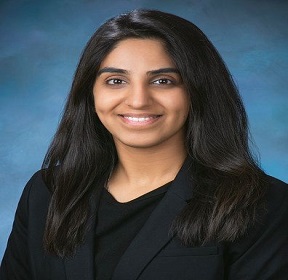
Pooja Patel
USATitle: Pasteurella Multocida: A Case Report on the Presentation and Challenges of Cellulitis, Osteomyelitis and Myocarditis
Biography:
Pooja Patel completed her medical school in Mumbai, India and is currently pursuing her Internal Medicine residency at Larkin Community Hospital in South Miami, Florida. She is currently a PGY2 resident, who aspires to specialize in cardiology and critical care. She is from the Midwest, not fearing living in the oh-so-cold winters. Patel enjoys learning and improving her skills, in every aspect available. She believes ‘teaching others is the easy way to learning’. Patel also completed and received her Master’s in Biomedical Sciences. She has volunteered her time at a non-profit organization since 2017, at Waukesha Free Clinic in Waukesha, Wisconsin (former St. Joseph’s Medical Clinic), and still continues to do so whenever possible. Patel was awarded the Director’s Coin during her rotation at the VA Medical Center in Grand Junction, Colorado for the care provided to our veterans, and for volunteering to help the community in times of the COVID surge in the late 2021. As a physician, she prides herself on serving those who have served our country.
Speakers

Stefania Czapp
PolandTitle: Conduction abnormalities after TAVI
Abstract:
Transcatheter aortic valve implantation is a procedure that allows the aortic valve replacement via minimally invasive technique. We can distinguish several access methods: transfemoral, transapical, subclavian, direct aortic as well as transcaval. Patients who underwent TAVI have a lower mortality rate in comparison with those who have non-operated severe aortic stenosis. Although advantages prevail over disadvantages, the procedure may entail conduction abnormalities. The most common are: left bundle branch block and high-grade atrioventricular block. The proximity of the aortic valve to the conduction pathways (possible injury as a result from interventional equipment interactions) as well as the anatomical variants of AV nodes may predispose patients who underwent TAVI to higher risk of conduction abnormalities. We can distinguish several factors that have the evident impact on previously described complications, such as: pre-existing RBBB, type of the transcatheter valve, annular size, depth of the implantation and the degree of mitral and aortic valve calcifications. The electrocardiographic recordings that are the cause of concern are narrow QRS complexes (especially before TAVI) as well as fluctuating changes in PR interval. Among risk factors for LBBB development we can underline the self-expandable prostheses (in comparison with balloon-expandable ones) and larger implant depth. The behavior of heart blocks has been noticed to change dynamically during and after aortic valve replacement. Patients who presented conduction abnormalities before TAVI, were in the higher risk group. Majority of the heart blocks are reversible. The management of conduction abnormalities after transcatheter aortic valve implantation is based on the clinical status of our patient and ECG monitoring. Temporary pacemakers and PPM are being implanted if needed.
Biography:
Stefania Czapp has graduated from Medical University of Gdańsk in 2021 and now she is doing her postgraduation internship in Szpital Morski im. PCK in Gdynia (Poland). She has the big interest in Cardiosurgery and is planning to do her PhD in this field of science in Poland.

Marina A. Chichkova
RussiaTitle: Immunological predictors of myocardial injury development after coronary artery stenting
Abstract:
More than three million myocardial revascularization procedures are performed annually in the world. Recently, the ratio of angioplasty with coronary artery stenting and coronary artery bypass grafting in Europe is 2:1, in the USA and Japan – 6:1. Small myocardial injuries occur in 8-15 percent of cases after planned intracoronary stenting. It is often manifested only by the level of increase in cardiospepific immunological markers of myocardial damage without clinical and electrocardiographic signs of myocardial damage. The results of studies of 100 patients with coronary artery disease and stable angina (the second and third functional class) in one day after percutaneous coronary intervention with implantation of intracoronary stents (Xience, Taxus, Cypher, Vision, Kaname) in the department of the Federal Center for Cardiovascular Surgery during one year of follow-up were studied. Study group: patients on the first day after intracoronary stenting without clinical manifestations and changes in electrocardiography, but with immunochemical manifestations of small myocardial injury syndrome. Comparison Group: patients on the first day after intracoronary stenting without complications. Control group: 30 patients before intracoronary stenting. In the blood of patients of the studied groups, the levels of MB-creatine phosphokinase and troponin T were determined in dynamics by electrochemiluminescence using Elecsys reagent kits from Roche on the Elecsys2010 immunochemical analyzer from Roche Diagnostics (Switzerland). As a result of the conducted studies, some immunological and clinical-instrumental predictors of the risk of developing small myocardial injury syndrome after intracoronary stenting were established in patients with coronary artery disease and stable angina of the second functional class and the third functional class: diffuse coronary artery lesion (p<0,001), stenosis length – 24,07±1,3 mm (p<0,001), recanalization and stenting of coronary arteries (p<0,05), lateral branch occlusion (p<0,05), implantation of metal stents (p<0,05), implantation of two or more stents (p<0,05), the level of blood leukocytes – 10,23*10^9 / l (p<0,05), systemic atherosclerosis (p<0,05). Small myocardial injuries have an adverse effect on the long-term results of intracoronary stenting in patients with coronary artery disease and stable angina of the second functional class and the third functional class even after one year of follow-up after surgery: return of angina (2,86%), repeated hospitalizations (5,71%).
Biography:
In 2005 has completed her PhD at the at the National Medical Research Center of Cardiovascular Surgery. Head of the Department of Cardiology of the State Medical University from 2008 to 2018, then professor of this Department. Head of the Primary Vascular Center for the Treatment of Patients with Acute Coronary Syndrome and Acute Stroke from 2013 to 2018. Since 2018 has been a professor at the Department of Cardiology of the Central Medical Academy of the Presidential Administration of RF. She is the chief physician of the Cardiological Center. She is the author of 12 Patents for innovations, 3 monographs, 12 educational tutorial. Awarded a Silver and a Bronze Diploma of the International Championship (International Academy of Sciences and Higher Education, London, UK, 2012). She has published over 300 articles, has been serving as an of 5 editorial boards member.
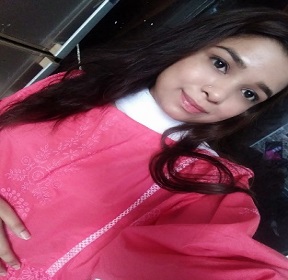
Arooba John
PakistanTitle: Cross Talk between Synthetic Food colors (Azo dyes), Oral Flora and Cardiovascular Disorders
Abstract:
Synthetic food colors are important ingredients in the food industry. Majority synthetic food colorants are azo dyes and obviously acidic in nature. They are present in sweets, carbonated drinks, meat products, and candies to attract the consumers. This study is an attempt to explain the adverse effects of azo dyes and their association with oral cavities and cardiovascular disorders. All of synthetic dyes (azo dyes) have staining effects on dentin. Poor dental care accelerates the bacterial accumulation on the dental crown (Gram-negative bacteria P. gingivalis, T. denticola, and T. forsythia and Gram-positive bacteria Strep. Gordonii), causing the washing of enamel, forming dental plaque. All the bacterial phyla contribute to different and major oral disorders, such as periodontal disease, which is caused by releasing different chemicals and toxins. Causing the gum disease by weakening the gum tissues. Streptococcus mutans in the mouth thrives on sugar and produces acids, which eat the enamel and accelerate the bacterial pathogens (P. ginigivalis and F. nacleatum) to release different chemicals (FadA and Fap2). These chemicals bind to protein on the cell by producing an inflammatory response through different line-host defenses, such as Gingival epithelial cells (ECs), Hemidesmosomes, and desmosomes, which helps the bacterium migration from the cell–cell junction. This makes the junctions slightly open up and makes the whole vessel permeable, through which the bacterium enters into the blood stream line. This leads to different major arteries such as the carotid artery and causes the accumulation of plaque in major cardiac arteries. Which causes different cardiovascular disorders. The bacterial species present in gums cause cardiovascular diseases such as ischemic heart disease, coronary artery disease, heart attacks, strokes, and arrhythmias which can lead to death.
Biography:
Arooba John completed by MSc Botany, Applied microbiology from Government College and university, Lahore, Pakistan. Her current field placement is microbiology, cellular biology and, Genotoxicity. She is interested in studying the effect of pathogenic oral microbiome and other microbial organism which cause major human diseases. The study which she has conducted on different oral Microbiome and their relation to Cardiovacular disorders is the result of the enthusiasm, efforts and passion for sciences. And it’s her aim, that by using these expertise she want to make a better environment in which every person can enjoy a better or healthier lifestyle. Arooba John recent publication on oral pathology is considered to be as a major contribution in scientific community. I believed that, this approach is turned out to be a remarkable contribution in world.
Video Presentation
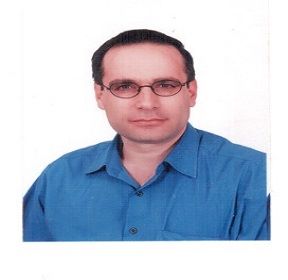
Samer AKL
SyriaTitle: Opening pulmonary valve in patients of heart failure
Abstract:
Pulmonary valve is the most dangerous _ the first killer in the world ,and the heart of 3 valves is better than that of 4 valves. Opening it by a stent or by a sond, gives great benefit for 2 types of patients ; TYPE 1;congestive heart failure[DCM]& TYPE II; Systemic arterial hypertension [HTN] Opening it by a stent or by a sond, gives indirect benefit for other types of patients. The new procedure is a new sond like PM sond designed to leave the PV always opened, it is a reversible procedure [if there is deterioration in the RV function , the sond is easily withdraw]. Scientific facts are we have to accept that pulmonary insufficiency[PI] is goodly tolerated for many decades , in pure congenital pulmonary stenosis,the best approach is balloon percutaneous intervention with excellent results,[that means PI is symptomatic],and no need in future for pulmonary val replacement[PVR].the only need for PVR is post Tetralogy of Fallot in only 10% after 20years,knowing that there is hypoplasic in RV outlet and pulmonary arteries and sometimes the need to do blalock[central shunt ],and to put a patch to widen the outlet ,and almost all the operations of PVR are done for pts of patchs, and those with preserved annulus and valvectomy do not need PVR ,that means the cause of right heart failure is iatrogenic and I think the operation PVR is not valid and malevaluated,I think it is avery particular case, and I shell exclude it
Biography:
Samer AKL is medical doctor (MD) by profession and works with one of the private hospitals and lecturer in private institute of medical science in Syria. He holds an MD in medical, He has 2 years of private practices as a general physician (Doctor). He has also been involved in outbreak investigations of EPI in Syria.

